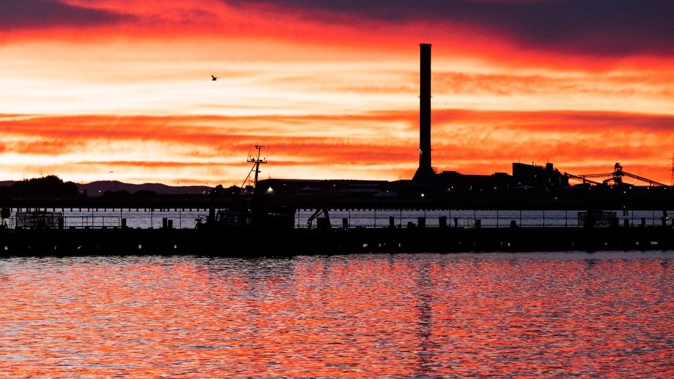
Meridian Energy and New Zealand Aluminium Smelters (NZAS) have signed a deal to keep the plant at Tiwai Point operating for the next 20 years.
The agreement - which took 18 months to negotiate - includes a significant demand response deal to make more electricity available for the country when it may be required in times of high demand, and commitments for the environmental remediation of the smelter site, Meridian said.
The deal includes a 377 megawatt (MW) load from 2025 – the majority of the 572 MW the smelter needs.
Meridian chief executive Neal Barclay said the agreement was “an excellent result” after many years of hard work.
“This is a fantastic outcome for New Zealand and the Southland region.”
The smelter’s future had been in doubt after its majority owner Rio Tinto said it may close due to its age.
The plant opened in 1971 and employs 738 people. It is New Zealand’s biggest power user.
The deal also includes the Southland smelter’s other suppliers - Contact Energy and Mercury.
Barclay said the deal was further proof large industrial businesses could use New Zealand’s renewable energy advantage and create low-carbon sustainable products, high value jobs and export dollars for New Zealand.
“We are very pleased that the NZAS team have adopted a more flexible approach toward their operations.
“The demand response element of this new agreement is groundbreaking, not only for this country but globally.
“The level of flexible demand offered by NZAS will support the electricity system to become even more renewable, while relying less on coal and gas when the hydro lakes are low.”
 Meridian Energy chief executive Neal Barclay says the deal is a significant vote of confidence for exporters and big Kiwi industries. Photo / Doug Sherring, File
Meridian Energy chief executive Neal Barclay says the deal is a significant vote of confidence for exporters and big Kiwi industries. Photo / Doug Sherring, File
Barclay said the smelter life extension deal removed uncertainty for the electricity sector and helped pave the way for new renewable energy plants to be built.
He said Meridian will now consider implications on future pipeline investment and dividend policy.
NZAS said the plant had secured energy supply from three generators until at least 2044.
“With these agreements concluded, the uncertainty for our hard-working team members and Southland is now over, and we can get on with producing the aluminium New Zealand and the world needs for its energy transition,” NZAS chief executive Chris Blenkiron said.
Today’s announcement marked the end of complex negotiations spanning over 18 months.
“We have been deliberate and taken our time, to ensure we see a new, long term and sustainable future for the smelter, and give that certainty to our employees, Southland, and New Zealand,” he said.
The contract was to have run out at the end of this year.
Key elements of the deal are:
- Twenty-year power arrangements through three energy generators, replacing the single contract with Meridian Energy.
- A portfolio of contracts with Meridian Energy, Contact Energy and Mercury Energy will provide a volume of 572 MW required to run the three potlines at the smelter.
- Separate contracts with Meridian and Contact will enable up to 185 MW of dry year demand response to be made available.
Blenkiron said the deal was “a significant new chapter” in the history of the smelter, and for Southland.
Jamie Gray is an Auckland-based journalist, covering the financial markets and the primary sector. He joined the Herald in 2011.
Take your Radio, Podcasts and Music with you









